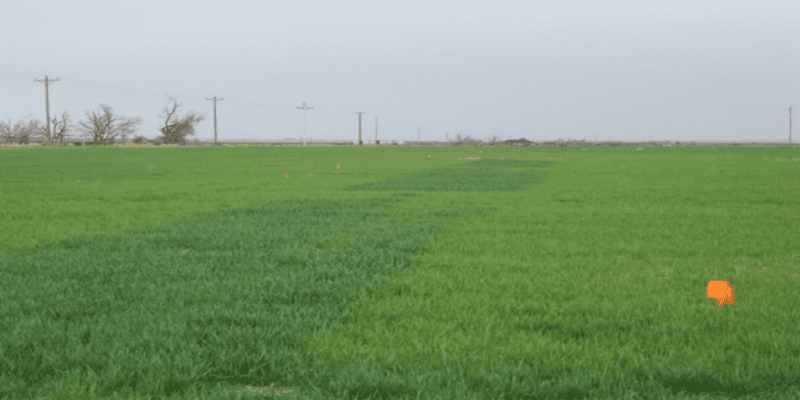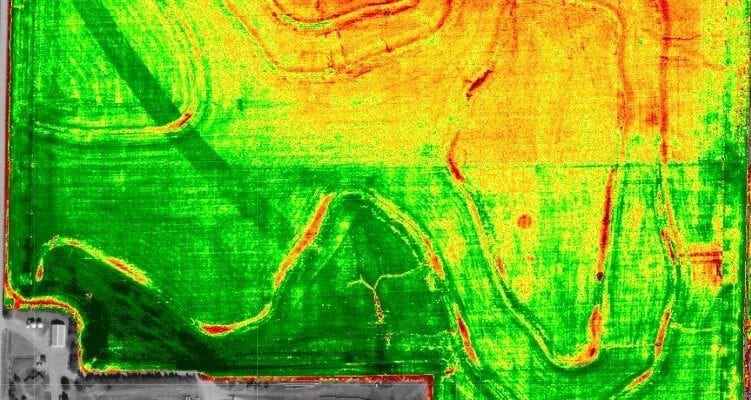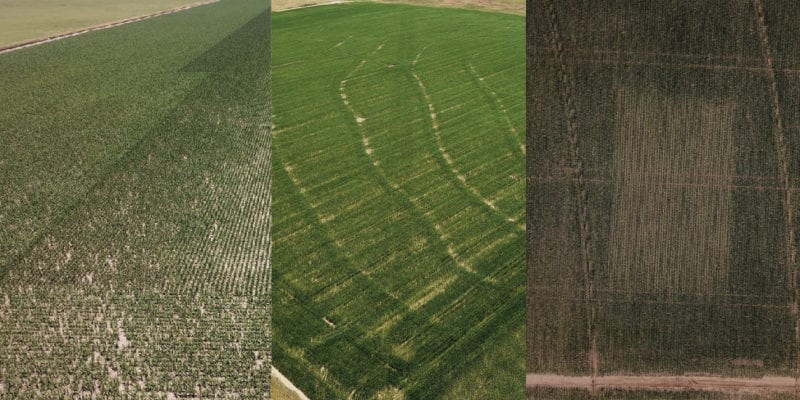The role calibrated imagery plays in your fertility ROI Using dirty data when trying to…

Planning for Your Wheat Crop
N-Rich Strips – the easiest thing you can do to boost yield and manage nitrogen
Nitrogen applications can be an emotional decision for farmers because there are few things they can control, but nitrogen is one thing they can control. With nitrogen, there’s concern in spending too much money and fear with not applying enough. Our unique approach aims to create solutions that remove these pain points, reduce stress, save money and optimize each acre’s yield and protein potential.
An N-Rich Strip and Trimble’s handheld GreenSeeker are cornerstones of our unique solution. As you prepare for sowing wheat, it is time to start thinking about integrating these methodologies into your program so our solution will be available to you in 2020 via TerrAvion. Integrating our methodology, makes placement and timing of nitrogen applications much easier.
WHY
Depending upon last year’s yield and concurrent environmental conditions, nitrogen application values can substantially vary. A soil test gives an accurate determination of the amount of nitrogen available at that exact moment. However, if fertilizer decisions are made from a pre-plant soil test, there is no accurate way to estimate the amount of nitrogen either mineralized or immobilized during the winter period. The only way to know how much nitrogen was made available between planting and time of top-dress would be use of a reference strip.
Reference strips offer an even greater benefit in the adoption of no-till and when rotating after a legume. Reference strips provide information on the amount of nitrogen the environment provides (mineralized from soil organic matter and/or deposited in the rainfall). Nitrogen reference strips say a lot about the environment. In years of high production, reference strips will likely indicate the need for more nitrogen and indicate the need for less in years where growing conditions are poor.
On-farm, sensor-based nitrogen studies in 15 wheat fields in Oklahoma showed an average savings of 20 lbs. of nitrogen per acre and resulted in a nitrogen rate application lower than the farmer’s traditional rate 60 percent of the time, and a higher application 40 percent of the time. Read peer-reviewed article here.
WHAT
An N-Rich Strip is a field’s communication outlet to you, the agronomist. The most basic use of the N-Rich strip is as a ‘yes’ or ‘no’ indicator. Which is just how it sounds, when you look at a reference strip if you can see the strip, it means ‘yes’ the field needs nitrogen. However, if the reference strip is not visible, ‘no’ this field does not need extra nitrogen. It is one of the most simplistic forms of precision agriculture a producer can adopt. It helps in communicating to you if and when nitrogen is needed, which is key to growing a successful wheat crop.
The N-Rich Strip is an area in the field that has received enough nitrogen to not be deficient during the growing season, regardless of environmental conditions. The rest of the field receiving the standard pre-plant rate is called the farmers practice. The N-Rich Strip is used in conjunction with Trimble’s GreenSeeker handheld sensor to determine mid-season nitrogen rates. N-Rich Strips are valuable in any field crop and are the easiest reference strip to apply.
WHERE
At least one strip is recommended in every field, every year; and it is best to change the strip’s location each year to avoid overloading the area with nitrogen. The strip should be placed in an area that best represents the field. Many people question this since it doesn’t account for full spatial variability in a field, and they are correct. While it is ideal to have multiple strips, a single strip provides enough information to address the temporal variability of nitrogen demand within a field. Often, even for variable rate management, getting the right average is the most important aspect.
The best-case scenario, on a field with significant variability, is to apply one or more field-length strip(s) that cross all potential zones. The field length strip will allow you to determine in-season response zones. Another option is to place smaller strips in each preciously established management or yield zone. With these approaches, site-specific VRT can be prescribed for each zone.
It is important to keep good records on where the strips are located each year. You can do this using our system, which will keep records for six years, or you can export a shapefile and upload it to your GIS system.



WHEN
When the strip is applied in winter wheat, timing is regionally dependent. For the central great plains, N-Rich Strips are put in place when pre-plant fertilizer is applied, during or soon after planting. In most cases, fertilizer should be down by the first of November. This does not say an N-Rich Strip applied after this time doesn’t work, but it does leave more room for error. There is a chance the crop could already be stressed, or the nitrogen has not released. For winter wheat, the placement of the strips can be delayed for up to one month after sowing. Most N-rich strips, because of their larger size, can take a light tillage pass.
HOW
It can simply be made by a double pass of the applicator when pre-plant nitrogen is being applied. N-Rich Strips should be at least 10 feet wide and 300 feet long. The rate should be no less than 50 pounds of nitrogen above the rest of the field. It’s common for strips to be wider and go the length of the field.
The pre-plant rate needs to be 50% less than the normal pre-plant field rate – lower is preferred. If a grower is struggling with the concept of a reduced pre-plant rate, a zero-check reference strip can be incorporated by simply turning the sprayer off.
EQUIPMENT
You have a few options when it comes to equipment but keep it simple. Do what works best for your operation and workflow.
Option 1
Use a pre-plant nitrogen applicator, regardless of the source, make an additional pass over the field. This is the most effective way to apply field length strips.

Option 2 (Above)
Purchase or rent a pull-type spreader with urea for a day and apply an N-Rich Strip to each field. The image above is of a ½ ton food plot spreader that can be pulled by an ATV.

Option 3 (Above)
A popular option is custom-made or adapted applicators. Due to multi-purpose use, ATV sprayers are the most common. In most cases a 20-25-gallon tank with a 1 gallon per minute (gpm) pump and an 8-10-foot break over boom is placed on the ATV.


Option 4 (Above)
The fourth option is to make anything that works. The above example is a right-of-way sprayer with a boom running along the rear of the trailer. The second image is a homemade boom mounted into a receiver hitch with a chemical tote filled with UAN in the back.

Option 5 (Above)
Get your steps in and use a push spreader to walk an area in the field.
N SOURCE
In all cases when liquid nitrogen is the source, it’s recommended some form of streamer nozzle. It’s recommended to use the source that is the easiest, cheapest and most convenient to apply. Watch all season long through flag leaf to see if the strip appears.
AFTER APPLICATION
Using an N-Rich Strip only as an indicator as to whether or not a field needs nitrogen does not give you a nitrogen rate recommendation. To get a nitrogen recommendation from an N-Rich Strip, a GreenSeeker sensor must be used.
The GreenSeeker sensor measures normalized difference vegetative index (NDVI), which is calculated from the reflected light collected by the sensor. The NDVI value from the GreenSeeker provides a highly accurate estimate of plant biomass. As a result, yield potential can be predicted mid-season using both sensor and some known climatic data from planting to sensing. By knowing the yield potential of the reference strip and the yield potential of the rest of a field, our system can calculate a variable rate nitrogen recommendation, and yield prediction and return on investment maps. Our land grant, peer reviewed-proven algorithm represents calculations used to mathematically predict yield potential and determine a nitrogen fertilizer rate.

It’s important to remember to make the tools fit for your specific regional needs and practices and not the other way around. If you need help in figuring out how to implement N-Rich Strips into your program, our agronomy ninja, Tyler Lynch, can help you with the best approach for your area. You can reach him via email at tlynch@ninjaag.com.
Dr. Brian Arnall, Precision Nutrient Management Specialist at Oklahoma State University, explains N-Rich Strips in this short video.
SOURCES
OSU Nutrient Use Efficiency Website
OSU NPK Website
Down and Dirty with OSU NPK Blog



